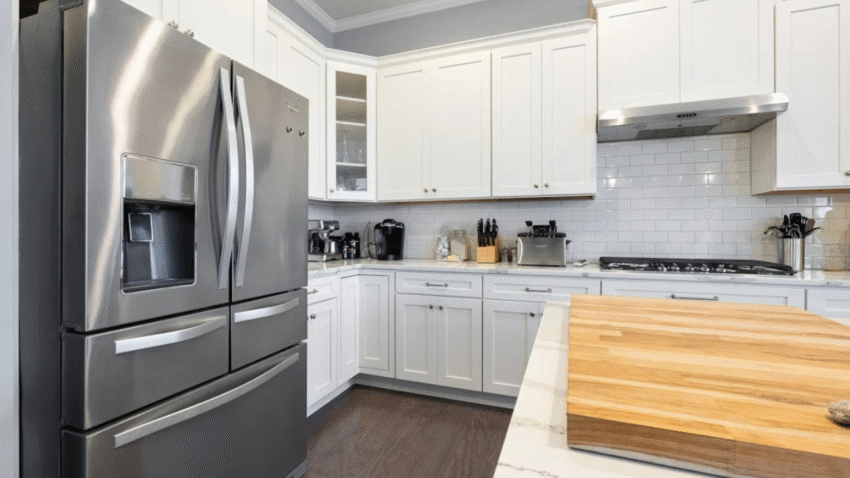Introduction
Want to make your dishes look more professional without breaking a sweat? Mastering the julienne cut is a great place to start. In this guide, you’ll learn how to julienne carrots with ease using simple tools and techniques. Whether you’re prepping a salad, stir-fry, or garnish, this elegant cut enhances both presentation and texture. Let’s break it down step-by-step so you can do it confidently and consistently at home.
Why Julienne Carrots Matter in the Kitchen
Julienned carrots aren’t just about looks—they’re about precision, consistency, and enhancing the eating experience. The uniform size and thin shape allow the carrots to cook evenly, blend seamlessly into dishes, and offer a refined visual appeal.
This cut is perfect for stir-fries, slaws, wraps, spring rolls, and even plating gourmet-style meals. It also helps integrate flavors better when carrots are paired with dressings, marinades, or sauces. Knowing how to julienne carrots efficiently improves your knife skills and gives your kitchen prep a polished, professional edge.
Step-by-Step Guide to Julienne Carrots
1. Gather Your Tools and Ingredients
Before you start slicing, make sure you have:
- Fresh carrots (firm and straight work best)
- A sharp chef’s knife or santoku knife
- A vegetable peeler
- A cutting board
- Optional: A mandoline slicer with a julienne blade
Kitchen Tip: The sharper your knife, the safer and cleaner your cuts will be. Dull blades are more likely to slip.
2. Wash and Peel the Carrots
Rinse your carrots thoroughly under cold water to remove dirt. Use a vegetable peeler to remove the outer skin.
Pro Tip: For dishes where presentation matters, use uniformly thick carrots to get evenly sized strips.
3. Cut the Carrots into Manageable Sections
Slice off both ends of the carrot. Then, cut the carrot into 2–3 segments, each about 2 to 3 inches long. This makes the carrot easier to handle on the cutting board.
4. Square Off the Carrot Segments
Stand each piece on its end and slice off a thin edge on one side to create a flat base. Then, continue slicing thin strips from each side to form a rectangular prism. This step helps create uniform slices later.
Reminder: You can save the trimmed edges for making broth or stock—don’t toss them!
5. Slice into Thin Planks
Lay the rectangular carrot pieces flat on the cutting board. Carefully slice them lengthwise into thin planks about 1/8 inch thick. Keep your fingers curled under and use a claw grip for safety.
Kitchen Hack: Stack two or three planks at a time to speed up the next step.
6. Cut the Planks into Matchsticks
Stack the planks and slice them lengthwise again to form thin matchstick-sized strips. The goal is to create uniform pieces about 1/8 inch wide and 2 inches long.
Result: You now have perfectly julienned carrots!
Optional Method: Using a Mandoline
If you’re short on time or want ultra-uniform strips, use a mandoline slicer with a julienne blade attachment. Just:
- Set the blade to julienne mode
- Slide the peeled carrot lengthwise across the slicer using the hand guard
- Collect the thin, even matchsticks from the other side
Caution: Always use the hand guard with a mandoline. These blades are very sharp and can easily cut your fingers.
Common Mistakes to Avoid
Mistake 1: Using a Dull Knife
Solution: A dull knife crushes rather than slices. Always sharpen your blade before attempting precision cuts like julienne.
Mistake 2: Skipping the Squaring Step
Solution: Not squaring off the carrot makes it hard to get uniform planks, leading to uneven cooking and messy presentation.
Mistake 3: Cutting Too Fast
Solution: Rushing increases the risk of injury and results in sloppy cuts. Take your time until muscle memory kicks in.
Mistake 4: Uneven Thickness
Solution: Use the same guide for each cut—aim for consistent 1/8-inch strips. If needed, measure the first few cuts to build accuracy.
Mistake 5: Not Using a Mandoline Safely
Solution: Always use the safety guard or a cut-resistant glove. Never push bare hands toward the blade.
Extra Tips & Kitchen Hacks
Tip 1: Practice with Softer Vegetables First
If you’re new to knife skills, practice julienne cuts on zucchini or cucumbers first. They’re softer and easier to slice, helping you build confidence.
Tip 2: Chill Carrots for Cleaner Cuts
Refrigerated carrots are firmer and easier to slice cleanly than room-temperature ones. Firmer carrots hold their shape better under pressure.
Tip 3: Store Julienned Carrots in Water
If you prep in advance, store julienned carrots in a container of cold water in the fridge. They’ll stay crisp for up to 3 days and are ready for stir-fries, salads, or snacking.
Related Task: After mastering julienne carrots, try doing the same with bell peppers or daikon for colorful veggie medleys.
Conclusion
Learning how to julienne carrots with ease is a skill that can instantly elevate your kitchen game. With the right tools, steady technique, and a bit of practice, you’ll be slicing uniform matchsticks like a pro in no time. Whether you’re using them to add crunch to a salad or beauty to a garnish, this simple skill makes a big impact.
So sharpen your knife, grab a few carrots, and give it a try. Bookmark this guide and come back anytime you want to refresh your technique or refine your presentation.
